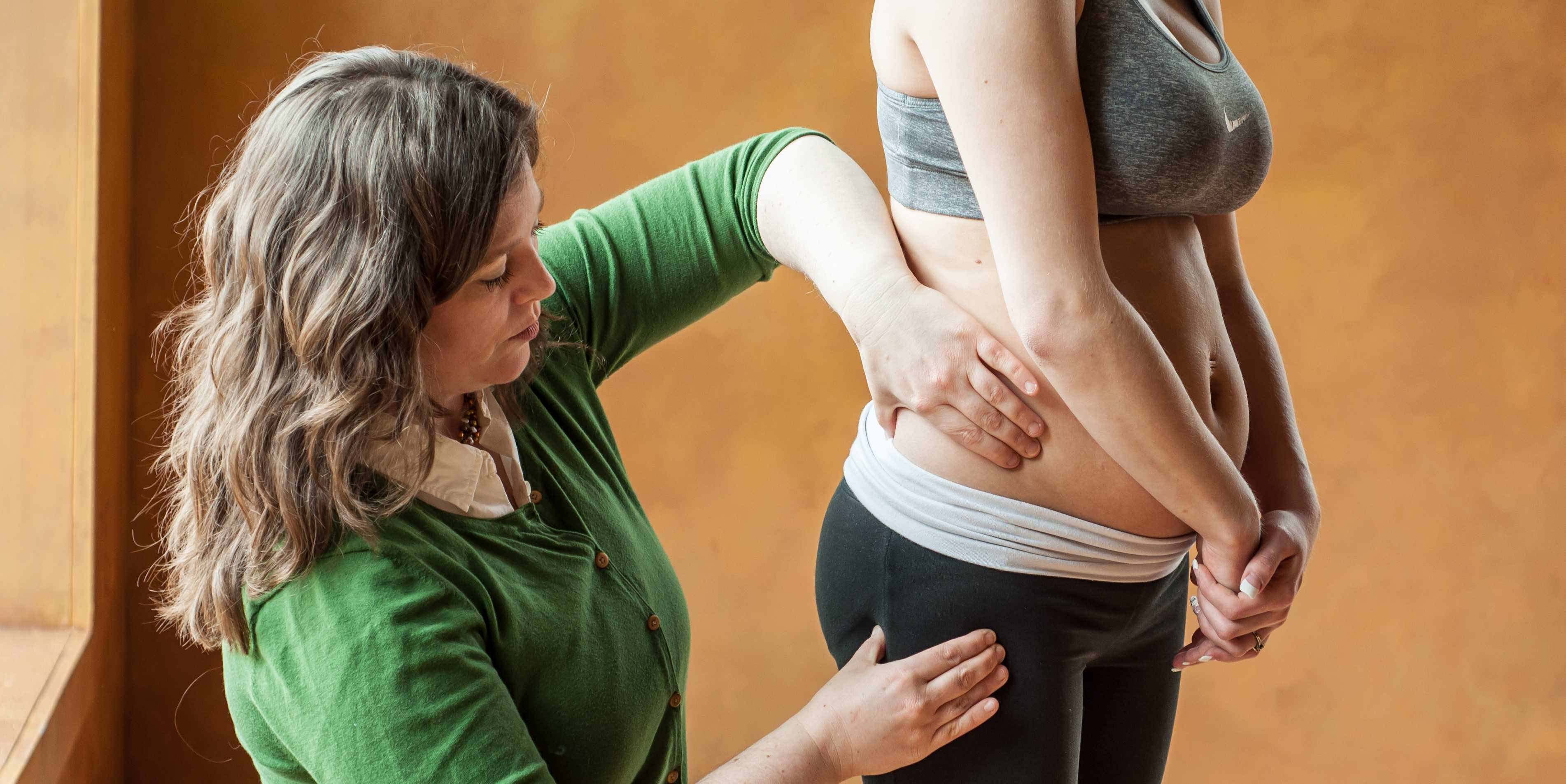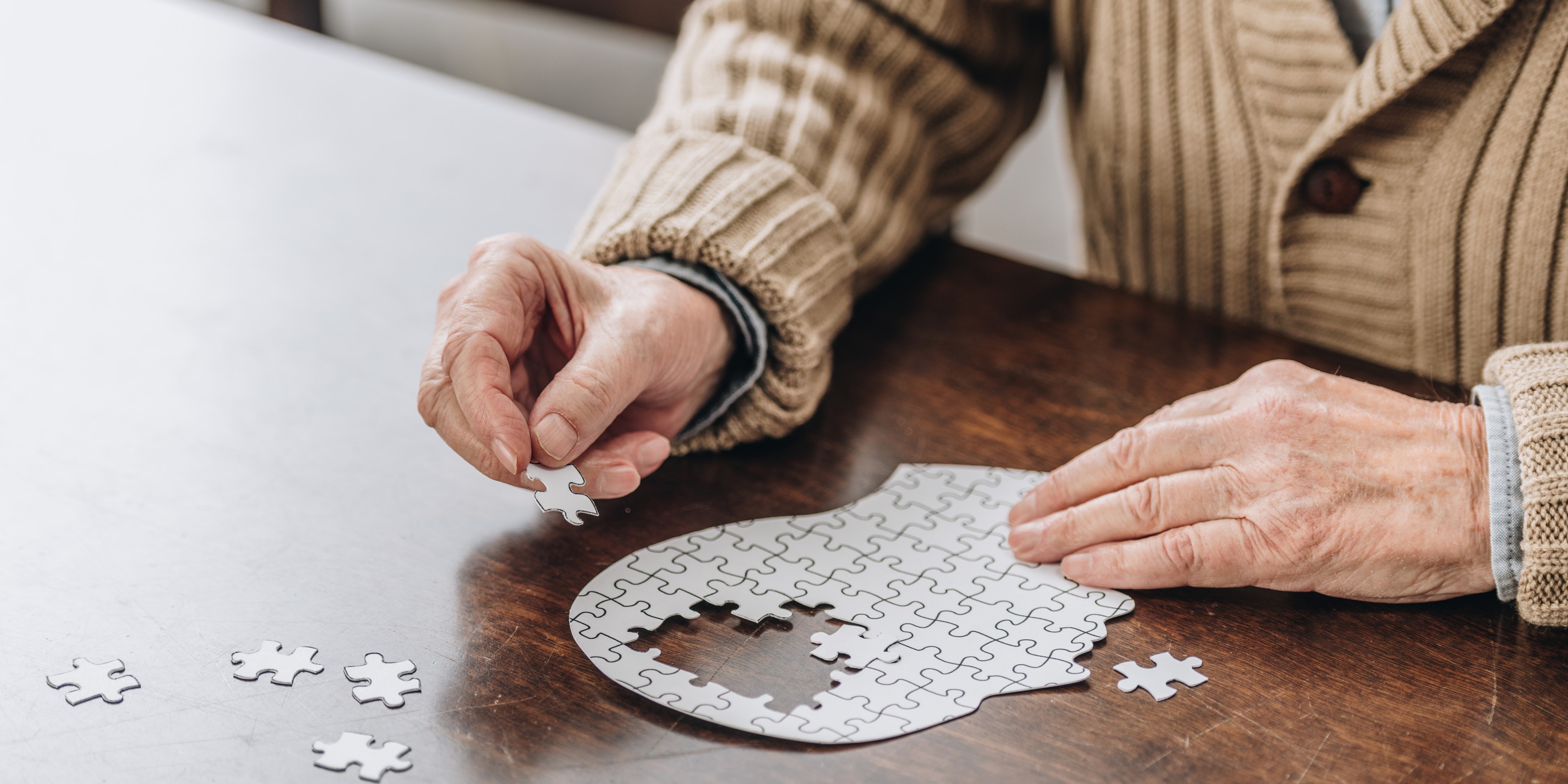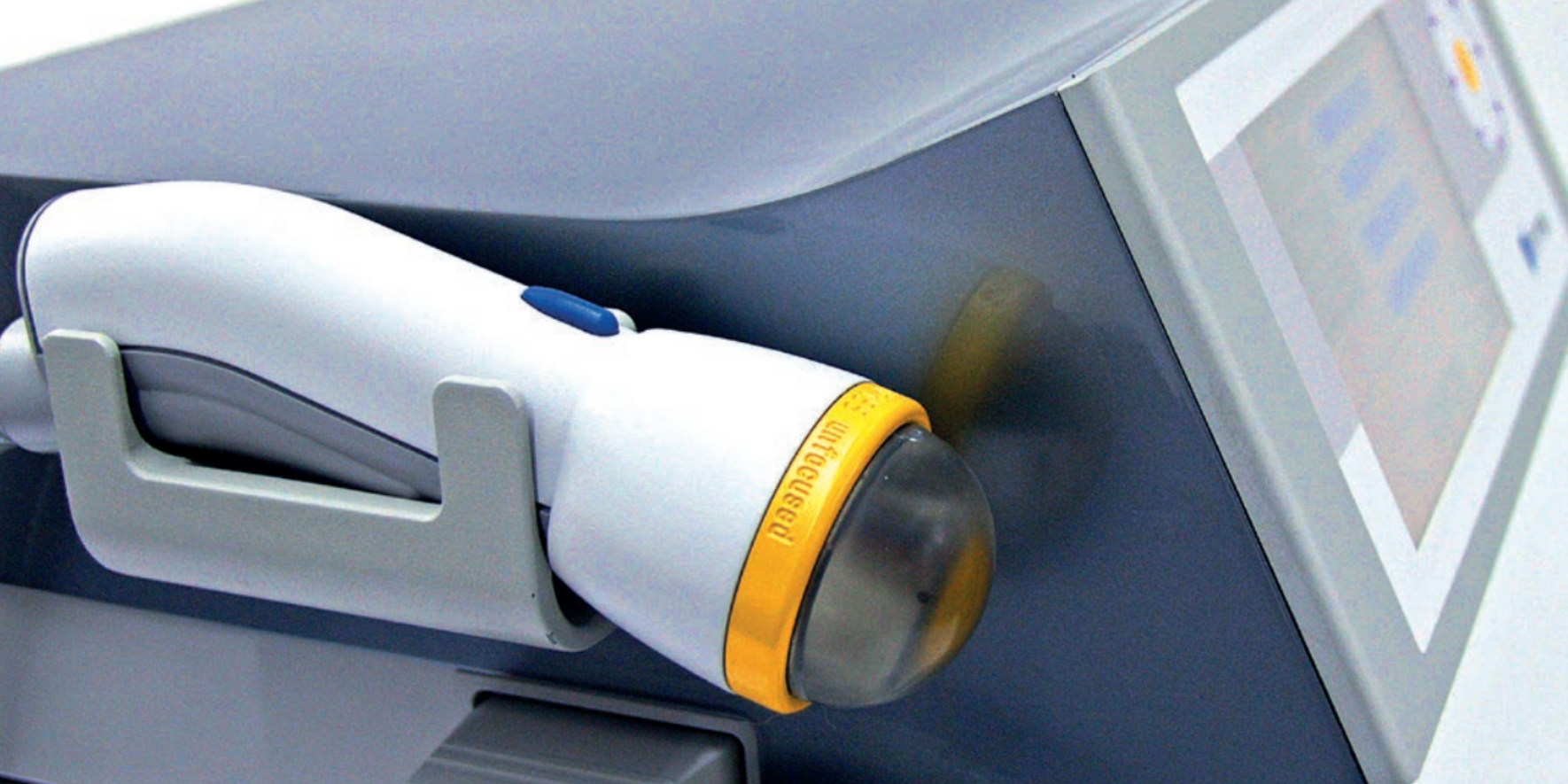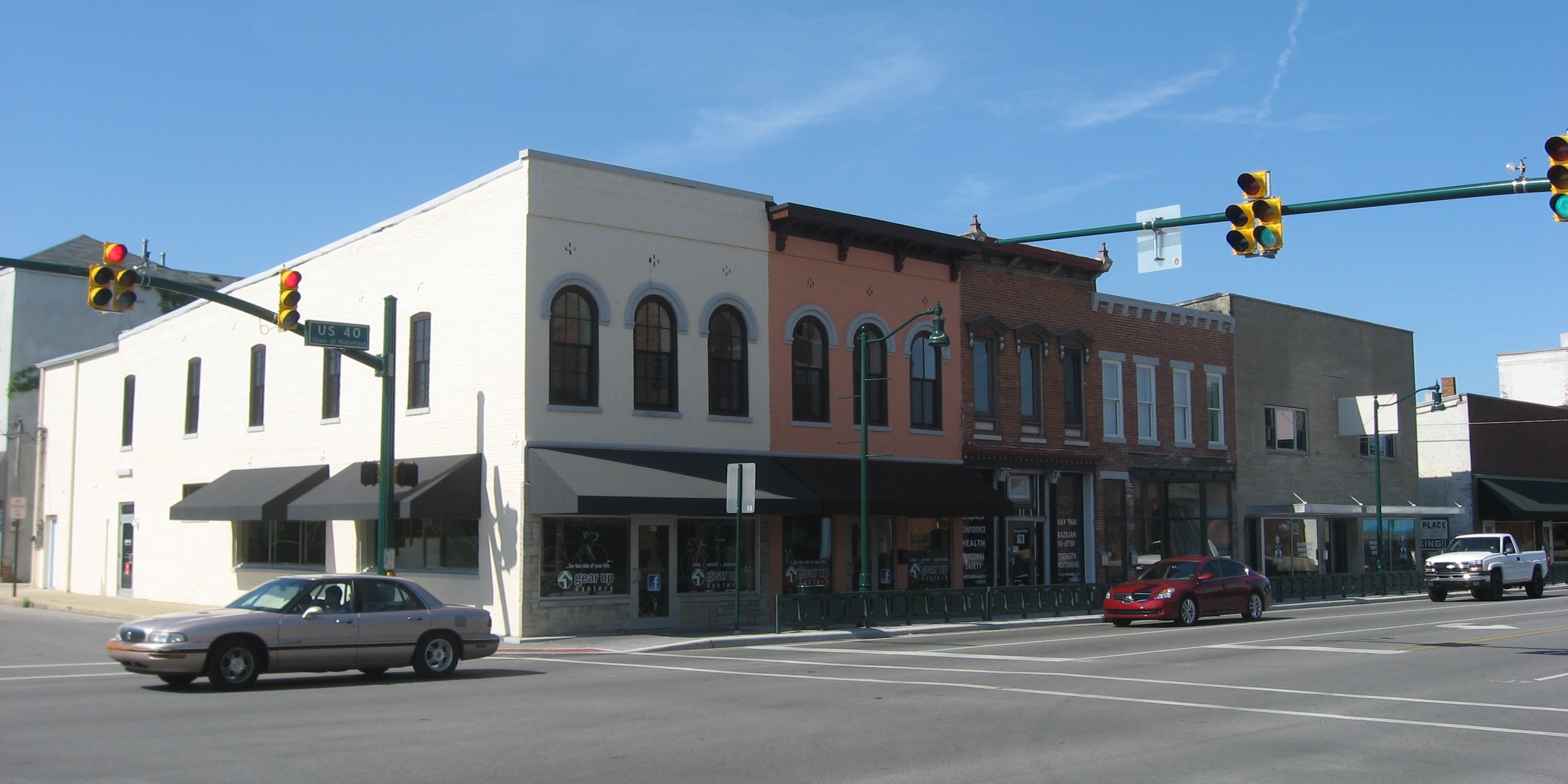This post was written by H&W instructor Ginger Garner, MPT, ATC, PYT. Ginger will be instructing the course that she wrote on "Yoga as Medicine for Pregnancy" in New York this November.

The power of language is inarguable. The spoken word affects how we see, perceive, and interpret the world around us. Language can also influence our actions and behavior, especially toward people around us.
The power of language in health care is not only important, but critical in prenatal health. The language a provider uses can help or harm a mother’s confidence and even her beliefs about birth.
Action to recognize and respond to the importance of language in general health care began with People First Language (PFL) movement. PFL advocates for mindful use of language that identifies the person first, rather than identifying the person based on their disability. Advocacy groups first started the movement for children’s sake. Mother’s who had given birth to children with Down’s syndrome wanted their children to be recognized as people first, rather than by their disability.
An example of People First Language would be, “Beth is a child who has Down’s syndrome,” instead of “Beth is a Down’s (syndrome) child.”
The second statement can be dehumanizing, whether intentional or subconscious. The effects of being identified as a disability, rather than as a human being, are far reaching on psycho-emotional and physical health, and can project a negative connotation on the individual. Read more on People First Language
However, have you noticed that no such language is used for prenatal care?
The shameful statistics on American childbirth and mortality rates for mothers and babies is no secret, internationally. However, many US mothers may not realize that their likelihood of receiving poor prenatal care is so high. In fact, it is dangerously high. Read my post: American Childbirth: A Human Rights Failure?
However everyone, including health care providers who provide prenatal care, can have a powerful impact on improving childbirth in America.
How? Through language.
Yoga as Medicine for Childbirth & Postpartum courses I teach for Herman & Wallace Pelvic Rehabilitation Institute, language is a powerful part of the empowerment process for women. It is an integral part of the biopsychosocial model available to 21st century healthcare providers who use yoga in prenatal and postpartum care. Yoga can improve postpartum physical therapy care and help moms who want to have a natural childbirth. Yoga is also a powerful prenatal mind-body fitness aid as well and works to decrease pain across the journey of pregnancy and into postpartum. Read this post on Why Every Expectant Mom Needs Yoga.
Yoga is a mind-body practice that places paramount importance on language. In fact, yoga uses an entirely different language than biomedical prenatal or postpartum care. Yoga focuses on empowerment through language and action.
Prenatal care using women-centered language looks very different than the historically patriarchal driven vernacular that is still being used today. These statements describe the same situation, but have profoundly different effects on a woman and her confidence and ability to give birth. Consider these common scenarios from a perspective on The Power of Birth Language.
Which scenario would you rather give birth in:
“My doctor/midwife is going to let me use a birthing tub.”
VERSUS “My doctor/midwife supports my plan to give birth in water.”
“My doctor/midwife delivered my baby.”
VERSUS “I gave birth to my baby (in the are of ______).
The first scenario in each example takes power from the mother and negates her participation and involvement in pregnancy and birth. The first scenarios also place her in a dominator relationship under the authority and order of the health care provider.
The second scenario in each example recognizes that mothers should be full partners in their own healthcare, not subordinates without a voice. The second scenario also recognizes that birth should be women-centered, not healthcare provider-centric.
Woman-centered language can usher in a powerful shift in prenatal care, helping tip the scales toward the positive for birth reform in America. Adopting the mindfulness of an ancient system, like yoga, can likewise enrich and expedite the process of reclaiming the full power of birth.
To learn more about Ginger's Women-centered continuing education for health care providers seeking integrated care when working with women during pregnancy or postpartum, visit Yoga as Medicine for Childbirth & Postpartum and join her for Yoga as Medicine for Pregnancy
This post was written by H&W instructor Ginger Garner, MPT, ATC, PYT. Ginger will be instructing the course that she wrote on "Yoga as Medicine for Labor and Delivery and Postpartum" in Washington this August.

Physical therapists often see women during pregnancy and postpartum, but what can physical therapists do to foster better birth outcomes?
A 2012 study conducted in Norway underscores the importance of childbirth education, which can take place as part of patient education and counseling in physical therapy. The study looked at 2206 women with intended vaginal delivery in order to assess the association between fear of childbirth and duration of labor. Labor duration was found to be significantly longer in women with fear of childbirth, with the rate of epidural analgesia, induction, and instrumental vaginal delivery also being higher in fearful women. The authors posit that “anxiety and fear may increase plasma concentrations of catecholamines, and high concentrations of catecholamines have been associated with both enervated uterine contractility and a prolonged second stage of labour.” (Adams et al 2012).
Yoga is a mind-body intervention that is supported to lower pain perception, anxiety, reported stress, and discomfort, all variables that can improve overall birth outcomes and reduce fear of childbirth. Integrative physical therapy practice uses a biopsychosocial model, one that uses energetic, emotional, physical, intellectual, and spiritual support methods to prepare a mother for her labor, delivery, and beyond. Mason et al (2013), in a study that compared standard diaphragmatic breathing to yogic breathing, found yogic breathing to be superior in all measured areas, including increasing/affecting: 1) cardiac-vagal baroreflex sensitivity, 2) oxygen saturation, 3) oxygen absorption, 4) tidal volume, 5) vagal stimulation, 6) parasympathetic activation, and 7) overall reported physical and mental health.
Yoga can address more than just flexibility or relaxation for laboring moms. It fosters calm awareness, mind-body concentration and focus, develops postural control and lumbopelvic health, including neural and myofascial health and motor patterning, all of which, combined with conventional physical therapy practice, can be more efficacious than exercise prescription or childbirth education alone. Ginger’s course, Yoga as Medicine for Labor, Delivery, and Postpartum addresses the systems-based changes of the pregnant patient, and prepares the physical therapist to meet the needs of the laboring or new mom with a mind-body holistic perspective.
To learn more about Ginger’s course, visit Yoga as Medicine for Labor, Delivery, and Postpartum
This post was written by H&W instructor Ginger Garner, MPT, ATC, PYT. Ginger will be instructing the course that she wrote on "Yoga as Medicine for Labor and Delivery and Postpartum" in Washington this August.
Note: This post is for colleagues, patients, and friends whose greatest desire is to have a healthy baby via natural childbirth. In this article, natural childbirth refers to an unmedicated delivery of your baby, assisted with natural, non-pharmaceutical means. While not all women have the luxury of natural childbirth, and some choose other means, please know that Ginger’s course supports all women and their personal decisions about birth.

My first natural birth was December 27, 2005. After a long, hard labor that started on Christmas, my son Michael arrived safe and healthy into my arms.
But something was missing.
I could have better prepared for birth. Bradley technique had reinforced that yoga was a wonderful way to relax and give into the sensations of contractions. Prenatal Pilates and walking, along with yoga, had also provided me with the endurance to go the long 36-hour distance during labor.
What was missing was my active, deliberate, and planned participation during birth.
A birth plan helps to organize your thoughts, but a mother needs her own, personal birth plan too. After Michael’s birth, I began to create my own future personal birth plan, which also changed the way I saw, and helped, my own prenatal patients.
That personal birth plan carried me beautifully (and with less pain and more control) through my next two births, William and James. An n of 2 (subject size of 2, in research terms) was small, but very soon after science began investigating the actual effects of using yoga for childbirth preparation and actual labor and delivery. The results are very promising, as I’ll discuss below.
Expectant women should work directly with an experienced physical therapist to create their own personal birth plan based on their individual mind-body needs. Mind-body needs should consider the following variables:
- Physical Labor Needs: Adapt labor and birth positions based on the patient’s specific orthopaedic injuries or aches and pains that can prevent focus or certain positioning during birth. This could include but is not limited to problems like hip impingment, shoulder impingement, sacroiliac joint pain, back pain, limitations in ROM, or existing pelvic pain.
- Psychoemotional/Physical Labor Needs: Consider previous birth trauma or history such as prior C-section, episiotomy, or difficulty with pain management or dilation that may affect labor progression.
- Psychoemotional/Energetic/Spiritual Labor Needs: Establish adequate birth support during labor. A 2012 Cochrane review of RCT’s found that women with continuous support were more likely to have a spontaneous vaginal birth, less likely to have pain medications, epidurals, negative feelings about childbirth, vacuum or forceps-assisted birth, and C-sections. Women with support also had shorter labors by 40 minutes, higher APGAR scores, and the best overall outcomes. Constant support means a mother has someone continuously at her side during the entirety of labor. That person must also be an active, knowledgeable participant in the labor process, not just a warm body taking up space.
- Intellectual Labor Needs: Educate the mother and her birth partner about how to execute the personal birth plan, which can include yogic breathing, a bevy of yoga posture options for individualized labor and birth positions, guided imagery and/or motor imagery techniques, and hands-on manual therapy techniques.
- Psychoemotional/Energetic Labor Needs: Address any previous birth or sexual trauma which could create anxiety and fear. Anxiety and fear of childbirth can prolong labor more than 90 minutes (Adams et al 2012).
Yoga is an amazing, proven method to directly diminish perceived pain during labor, immediate postpartum pain, and shorten labor duration, as well as improve maternal comfort and birth outcome scores, as found in a 2008 randomized trial of 78 pregnant Thai women.
Ginger’s course, Yoga as Medicine for Labor, Delivery, and Postpartum prepares the physical therapist to meet the needs of the laboring mother with an evidence-based mind-body holistic perspective, which includes designing individualized birth plans for labor and delivery. Future posts will also address the postpartum curriculum included in the course. To learn more about Ginger’s course, visit Yoga as Medicine for Labor, Delivery, and Postpartum.

This post was written by H&W instructor, Ginger Garner, PT, MPT, ATC, PYT, who teaches the Yoga as Medicine for Pregnancy and Labor & Delivery and Postpartum courses, and is teaching her brand new course, Extra-Articular Pelvic and Hip Labrum Injury, in June in Akron, OH.
Research into the surgical and nonsurgical management of acetebaular labral tears is young, but growing fast. Physical therapy is considered an integral part of nonoperative management of acetabular labral tears, with a trial of therapy also serving as the newest standard in preoperative and postoperative care. Conservative care becomes even more important in young dancers.
A critical concern in all individuals is hip joint preservation and prevention of premature joint degeneration and development of osteoarthritis. Especially in young females, who start with a higher risk of labral tears, sports like figure skating, dancing, and gymnastics further increase risk and prevalence of tears.
There are several reasons young women can experience a labral tear, but in general the etiology will fall under five possible categories: 1) congenital, 2) traumatic, 3) degenerative (far less likely with a young population), 4) capsular laxity, and/or 5) idiopathic causes such as femoral acetabular impingement. There are many more causes that fall under each category, but early intervention is repeatedly found in the literature to be perhaps the most important variable in long-term hip joint preservation and outcomes. Duke University physical therapist and orthopaedic surgeon, Michael Reiman and Chad Mather, respectively, authored a 2014 article with colleagues from Ohio that outlines the five major etiological categories, discussing the increasing prevalence of labral tears in high-risk populations and underscoring the need for early intervention. Citing diagnosis of labral tears as “continuously challenging”, the article emphasizes that a battery of tests and screening, rather than a single diagnostic viewpoint, are requisite in identifying an acetabular labral tear.
For young dancers, early intervention is of utmost importance. A case study currently in press (April 2014) reports success with a 12-year-old skeletally immature figure skater with a diagnosis made within the first month of the onset of pain and impairment. A six-week trial of physical therapy began immediately on consensus of three pediatric orthopaedic surgeons specializing in arthroscopic management of the acetabular hip labrum. At the 4-week follow-up, progress in PT was being objectively made with pain levels diminishing and functional performance improving (with no return to skating yet). After a continuation of therapy for an additional 6 weeks, the figure skater was able to return to skating and perform single jumps and double Lutz at 75% of her normal jump height without pain. At that time, PT was decreased to 1x/day weekly while continuing her normal home therapy program. After another month of therapy, she returned to her full training schedule. At the four-month visit she had returned to full competition with full spins and jumps (double axels) without pain. The one-year follow-up found the young patient pain-free and competing at local and national competitions.
The importance of physical therapy cannot be underestimated in young athletes, especially females, due to their inherently increased risk of labral injury. Further, multiple studies cite the importance of a multi-disciplinary, integrated approach in managing the hip labrum.
My Hip Labrum Injury course will focus on this biopsychosocial and integrated approach, including both conventional and integrative techniques in order to obtain the best outcomes for patients.
You can read some of my previous posts on evaluating risk and prevalence of hip labral injury:
• Lady Gaga’s Hip Labral Tear: Are you at Risk?
• The Postpartum Hip and Labral Tear Risk
• The Importance of Early Intervention in Labral Tears
• Implicating the Iliopsoas in Acetabular Labral Tears: Focus on Anatomy
Want to learn more from Ginger? Join us in June!

This post was written by H&W instructor, Ginger Garner, PT, MPT, ATC, PYT, who teaches the Yoga as Medicine for Pregnancy and Labor & Delivery and Postpartum courses, and is teaching her brand new course, Extra-Articular Pelvic and Hip Labrum Injury, in June in Akron, OH.
Pregnancy brings with it a bevy of physiological and hormonal changes, both of which greatly influence orthopaedic health, not to mention psychoemotional well-being. However, what has historically been overlooked is the risk at which the acetabular hip labrum and related structures are placed during pregnancy, labor, delivery, and the postpartum. Hip labral tears are debilitating and painful, preventing normal ambulation, ADL completion, or participation in any recreational activity, including sex. Tears can also lead or contribute to pelvic pain, with the average time of injury to diagnosis being an average of 2.5 years. This delay in diagnosis can put mothers at high risk for developing chronic pelvic pain.
Several theories have been posited as to why pregnancy brings increased risk of hip labral pathology. Increased joint laxity has been widely debated but is generally accepted as a plausible mechanism in back pain, sacroiliac joint dysfunction, pubic symphysis dysfunction, or related pain. Increased (axial) loading through the joint combined with joint laxity are thought to be compounding factors. These changes alone could explain the presence of a prenatal tear, says researchers Brooks et al (2012).
Unavoidable changes in joint structure and function during labor and delivery also place mothers at higher risk, which means screening for hip joint intra-articular pathology is vital in the clinical setting. Further, forces applied externally during labor can be responsible for hip labral tears. Brooks et al (2012) found 4 of 10 women (all with labral tears) reported a specific incidence during labor, such as a pop, twist, or sudden sharp pain in the hip, that led to their diagnosis of hip labral tear. The range of motion that is most often forced in the hip during labor is flexion and internal or external rotation, combined with abduction. This is a common mechanism of injury that applies torque at the hip joint and can commonly be delivered by a birth assistant (husband, relative, or health care professional). Birth biomechanics education is an important aspect of hip labrum preservation that should be included in interdisciplinary care.
Screens to identify mothers at highest risk for hip joint pathology and special tests to target the hip labrum and related structures should be considered a regular part of prenatal and postpartum care in women’s health physical therapy. Hunt et al (2007) raises the importance of interdisciplinary interaction in maternal health care since “differential diagnosis of anterior hip, groin, and pelvic pain spans many health care specialties from gynecology to general surgery to musculoskeletal medicine and orthopedic surgery.”
Finally, pre-existing conditions of the hip and pelvis, such as femoral torsion, femoracetabular impingement (FAI), hip dysplasia, shallow acetabulum, and lumbopelvic instability or failed load transfer can all contribute to the incidence of, and increased risk for, hip labral tears. Since over 80% of women give birth in the United States during their lifetime, the vast majority of women are at risk for hip labral tears. Universal screening and education for hip joint preservation should be made available, through women’s health PT, as part of national agenda to improve birth and maternal health outcomes.
A discussion of postpartum risk, screening, and education are offered in the new Hip Labrum Differential Diagnosis course. This course emphasizes evidence-based assessment and management of the hip in an interdisciplinary educational environment. My courses are known for their interprofessional focus on partnership in medicine and welcome physical therapists, physicians, physician assistants, midwives, physical therapy assistants, nurses, and anyone who works with populations where hip labral injury could be a concern. The course will address differential diagnosis and assessment of extra-articular factors that implicate hip labral injury. At the course, I will discuss both conventional rehabilitation and integrative medicine techniques for management and preservation of the hip.
Want more from Ginger on this topic? Join us in June!

This blog was written by H&W course instructor Ginger Garner PT, MPT, ATC, PYT, who will be teaching her brand-new course, Extra-Articular Pelvic and Hip Labrum Injury: Differential Diagnosis and Integrative Management, in Akron, OH this June.
Hip labral injury is now recognized as a “major cause of hip dysfunction and a primary precursor to hip osteoarthritis.” Although acetabular labral tears were first identified in 1957, attention has only been directed toward the acetabulum in the last 10-15 years.
Populations at highest risk for hip labral injury include women, expectant mothers, women who have had vaginal hysterectomies, and young and middle-aged athletes. Women suffer from hip labral injuries more frequently than men, putting women at highest risk for premature aging in the hip and osteoarthritis.
Adding to insult to injury is the average time between injury and diagnosis is typically 2.5 years, significantly reducing long-term outcomes for joint preservation. Pelvic girdle pain, lumbopelvic pain, and extra-articular hip injury are also common comorbidities that accompany hip labral tears, making differential diagnosis essential to successful management.
Hunt et al (2007) cites that “differential diagnosis of anterior hip, groin, and pelvic pain spans many health care specialties from gynecology to general surgery to musculoskeletal medicine and orthopedic surgery.” This statement underscores the vital importance of a collaborative, interdisciplinary partnership in medicine. Early intervention in hip joint preservation requires teamwork on the part of all health care specialties involved in a patient’s care. Physical therapists are a critical part of that team.
Structural disorders of the hip are not the only culprit for hip labral injury, and as a result, development of a unique skill set for hip labral injury assessment that includes soft tissue and structural integrity evaluation is required. This positions physical therapists as perhaps one of the most ideal clinicians to differentially diagnosis hip impairment due to their expertise in both structural and soft tissue assessment.
It cannot be overemphasized that missing a hip labral diagnosis can mean a devastating long-term prognosis for a patient. What’s more is diagnosis is elusive, making it even more important for physical therapists and related providers to establish parameters for early intervention through critical evaluation of the hip. Hunt et al (2007) state diagnosis requires “a high index of suspicion, special attention to subtle patterns of presentation, and timely consideration for imaging studies.” A 10-12 week trial of physical therapy is recognized in the literature as the standard for initial conservative management and should address not only the primary pathology but the sequela that complicates hip labral management, such as pelvic, spine and lower-extremity abnormalities.
If you would like more from Ginger on this topic, the new Hip Labrum Injury courseemphasizes evidence-based assessment and management of the hip in an interdisciplinary educational environment. Ginger's courses are known for their interprofessional focus on partnership in medicine and welcome physical therapists, physicians, physician assistants, midwives, physical therapy assistants, nurses, and anyone who works with populations where hip labral injury could be a concern. The course will address differential diagnosis and assessment of extra-articular factors that implicate hip labral injury. Ginger will discuss both conventional rehabilitation and integrative medicine techniques for management and preservation of the hip. Registration is available here.

This post was written by H&W instructor, Ginger Garner, PT, MPT, ATC, PYT, who teaches the Yoga as Medicine for Pregnancy and Labor & Delivery and Postpartum courses, and is teaching her brand new course, Extra-Articular Pelvic and Hip Labrum Injury, in June in Akron, OH.
In my previous two posts, I have discussed The Postpartum Hip and Labral Tear Risk and The Importance of Early Intervention in Labral Tears. Today I want to highlight the importance of the iliopsoas and its potential contribution to intraarticular injury sequelae at the hip joint.
A recent collaborative paper including Harvard University’s Department of Orthopaedic Surgery, New York’s Hospital for Special Surgery and the Midwest Bone and Joint Institute in Illinois took on the task of a 3-D cross-sectional analysis of the iliopsoas in order to explain its relationship to the acetabular labrum. The findings are important not only for athletes, the targeted population who most frequently experiences labral tears, but also for the postpartum population I discussed in a previous blog post, The Postpartum Hip. This study represented the first attempt of 3-D analysis of the iliopsoas musculotendinous unit, and here is what the study found from dissection of 8 joints:
• The iliopsoas is found anterior to, and at the level of, the anterosuperior capsulolabral complex at the 2-3 o’clock position, or slightly lateral.
• The iliopsoas is comprised of about 44.5% tendon and 55.5% muscle belly at the exact level of the anterior labrum.
• An inflexible, not just a snapping, iliopsoas could possibly increase labral tear risk and prevalence in athletes.
• A labral tear associated with FAI (femoroacetabular impingement) is typically found at the 11:30-1 o’clock position, as opposed to an iliopsoas-induced tear, which is found at the 2-3 o’clock position.
• The researchers were led to study the iliopsoas’ contribution because the 2-3 o’clock position labral tear was being found with similar frequency as the typically expected 11:30-1 o’clock position during hip arthroscopy.
The acetabular labrum is responsible for not only maintaining joint congruity but also for pressurization. This means that In the absence of an intact labrum, contact forces are greatly increased in the hip joint, leading to premature aging of the hip and early osteoarthritis. In addition, repeat hip arthroscopy can be reduced and hip labral injury prevented or even mediated by addressing the iliopsoas length/tension relationship conservatively. The option also exists to release the tendon surgically at the level of the labrum (rather than the trochanter), and for athletes, early intervention using a team approach could mean the difference between hip joint preservation or hip joint degeneration.
Ginger's new Hip Labrum Injury course emphasizes evidence-based assessment and management of the hip in an interdisciplinary educational environment. Her courses are known for their interprofessional focus on partnership in medicine and welcome physical therapists, physicians, physician assistants, midwives, physical therapy assistants, nurses, and anyone who works with populations where hip labral injury could be a concern. The course will address differential diagnosis and assessment of extra-articular factors that implicate hip labral injury. Ginger will discuss both conventional rehabilitation and integrative medicine techniques for management and preservation of the hip.

This post was written by H&W instructor Lila Abbate PT, DPT, MS, OCS. Lila will be instructing Pelvic Floor Level 3 with Institute founder Holly Herman in San Diego at the end of this month! Sign up for the few remaining seats left in this popular course!
When treating your patient who has undergone a pelvic reconstruction in the not-so-distant past, does the mesh controversy come to your mind?Is the effect of the mesh causing your patient this dysfunction and is she complaining of urinary urgency, urinary frequency, or pelvic pain? Understanding pelvic muscle dysfunction, as pelvic rehabilitation providers do, can put us in a good position to help our patients, as well as to help our physicians with this oftentimes litigious issue.
Urogynecologists, gynecologists, urologists, or any surgeon who deals in the business of female sexual medicine and pelvic reconstruction seems to have been put in a position to defend their stance on the use of mesh when working with patients who present with any degree of pelvic organ prolapse (POP), be it complicated or simple.The decision to utilize mesh is now made with greater emphasis on education for the patient who is undergoing the procedure.
The Food and Drug Adminstration (FDA) has released a proposal on April 29, 2014 in order to address the potential reclassification of surgical mesh for transvaginal POP from a class II (moderate risk) to a class III (high risk) device and would “require manufacturers to submit a premarket approval (PMA) application for the agency to evaluate safety and effectiveness.” 1 A similar proposal was put in place with breast implants in 1992 in order to create more awareness of safety concerns with the use of breast implants. 2
While older mesh kits (demonstrated to be more likely to cause complications) have been pulled from the market, any mesh surgery can create complications. As the body heals, scar tissue forms and contracts which is part of the normal healing process, and for some patients, this process can wreak havoc as the tissues and the mesh shrink. Muscles are bypassed, pressed upon, and ligaments are used as supportive measures for the mesh arms, and this can set up the pelvic floor muscles for edema, weakness, or even muscle over-activity. We know that different patients heal in different ways; just as a patient who has had a total hip replacement experiences muscle swelling, soreness, weakness, and scarring, a mesh surgery will necessarily create temporary dysfunction. However, physical therapists are skilled and well-versed in palpating and treating muscle dysfunction, scar tissue and adhesions, and we can educate our patients on the symptoms of mesh complication that may in fact be a muscle problem. Not every patient who has had mesh placement is suffering from mesh erosion, and physical therapists can help patients improve or resolve their symptoms over time through treatment.
Pelvic Floor Level 3 is an advanced course offered by the Institute that covers surgical procedures, pharmacology including hormone replacement, and other medical interventions that address pelvic muscle over-activity, tissue dysfunction, and surgical complications. Lab activities include manual techniques to downtrain (decrease muscle over-activity) such as Strain-Counterstrain of the pelvic floor muscles.
1.http://www.fda.gov/NewsEvents/Newsroom/PressAnnouncements/ucm395192.htm. Accessed on May 5, 2014.
2. http://www.fda.gov/MedicalDevices/ProductsandMedicalProcedures/ImplantsandProsthetics/BreastImplants/ucm064461.htm. Accessed on May 5, 2014.
This November, Herman & Wallace is thrilled to be offering a brand-new course instructed by Carolyn McManus, PT, MS, MA, called Mindfulness-Based Biopsychosocial Approach to Chronic Pain. This course will be offered November 15-16, 2014 in Seattle, WA. We sat down with Carolyn to learn more about her course.

The constant flood of information in today’s interconnected, wired world trains the mind in distraction and away from the immediate experience of life. Many people spend hours gazing down at quickly changing images on the small frame of an electronic device and only notice the body when it has its aches and pains! Mindful awareness offers us a skillful way to pay attention, build body awareness, touch life fully and provides a healing antidote to information overload.
Mindful awareness invites us to rest the mind in the present moment with openness, friendliness and curiosity. This is not our natural tendency and requires training. Often we are caught in a struggle with the present moment, perceive it as flawed, find fault with ourselves and constantly drive ourselves to run, do and achieve. When mindful, we still have our plans, goals and to-do list, but this is not an obstacle to resting the mind here and now. We can stop the struggle with the present moment, touch life fully and open to the potential for ease and insight in the midst of things just as they are. New perceptions and an experience of aliveness can occur that can never happen when we are lost in distraction. Danna Faulds expresses this beautifully in her poem "Walk Slowly":
It only takes a reminder to breathe,
a moment to be still, and just like that,
something in me settles, softens, makes
space for imperfection. The harsh voice
of judgment drops to a whisper and I
remember again that life isn’t a relay
race; that we all will cross the finish
fine; that waking up to life is what we
were born for. As many times as I forget to catch myself charging forward
without even knowing where I am going,
that many times I can make the choice
to stop, to breathe, and be, and walk
slowly into the mystery.
I began practicing mindfulness meditation to help manage stress and heal from a back injury. I found the practice easily translated to patient care and helped my patients build body awareness, detach from maladaptive thinking habits and experience inner calm and relaxation. They gained insight into the reactions, behaviors and situations that escalated and de-escalated their symptoms. Research shows that mindfulness improves attention regulation and executive function, body awareness and emotional regulation. (1) I am excited to share with my colleagues what I have learned through the practice of mindfulness and its applications to both self-care and patient care in my November course.
Learn more about Carolyn's course and join her this November in Seattle to attend her Mindfulness course!
1. Holzel BK, Lazar SW, Guard T, et al. How Does Mindfulness Meditation Work? Proposing Mechanisms of Action From a Conceptual and Neural Perspective. Perspect Psychol Science. 2011;6: 537–559.

This blog was written by Carolyn McManus, PT, MS, MA, who will be presenting at the APTA's Virtual NEXT conference in North Carolina. Carolyn is instructing a new course with Mindfulness-Based Biopsychosocial Approach to Chronic Pain. This course will be offered November 15-16, 2014 in Seattle, WA.
Last fall, I was honored to receive an invitation from the APTA’s National Conference team to contribute to this year’s Virtual NEXT programming. Virtual NEXT offers live and on-demand streaming of annual conference's signature lectures and select educational sessions, worth up to 1.6 CEUs. New this year, you can purchase presentations individually. For the price of one registration, you and your colleagues can get together and be part of a worldwide Virtual NEXT viewing party!
The title of my presentation, to be delivered on Thursday, June 12th, is “The Pain Puzzle: Empowering Your Patients to Put the Pieces Together.” I will highlight basic chronic pain neurophysiology, and briefly discuss the brain in chronic pain, stress-induced hyperalgesia and the cognitive modulation of pain. I will describe how this current evidence affects our clinical practice and suggest evidence-based treatment strategies. These will include therapeutic pain neurophysiology education and mindful awareness training. I will close with a case study that demonstrates how our treatment choices must be based on an understanding of underlying pain generating mechanisms in order to achieve success with this complex patient population.
If you cannot join me in Charlotte, North Carolina for APTA’s NEXT conference, I hope you can make an online date! For more information, go to the APTA’s NEXT Conference website:
Want to learn more from Carolyn? Join us in November in Seattle!










































